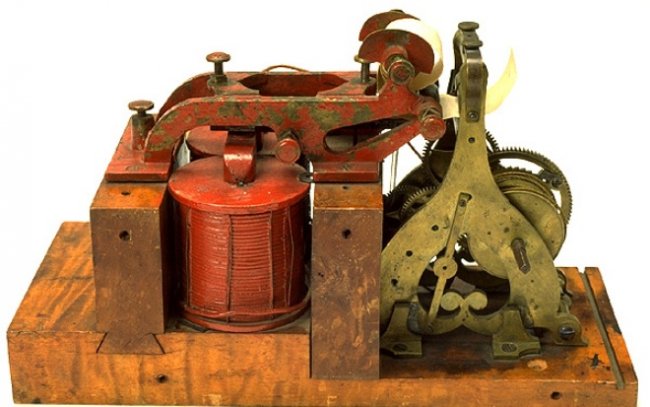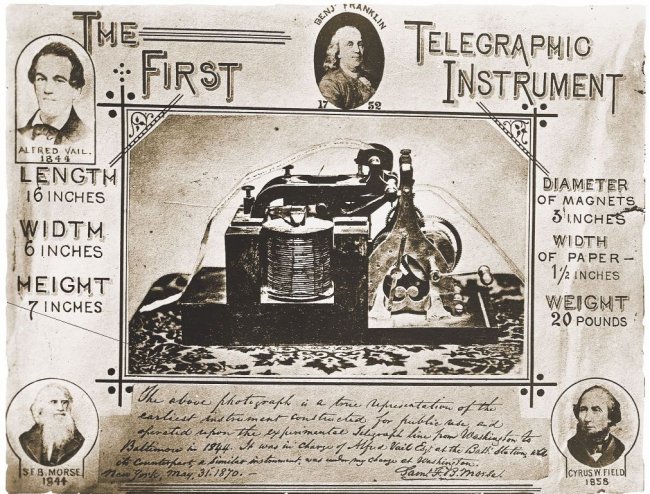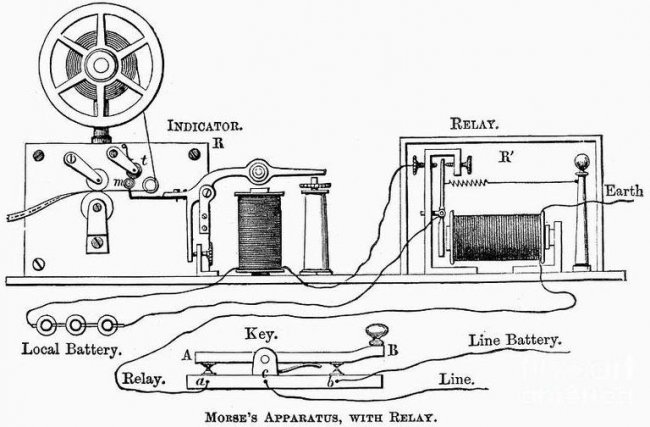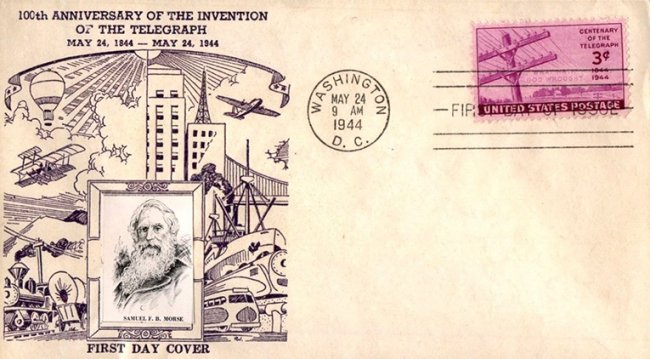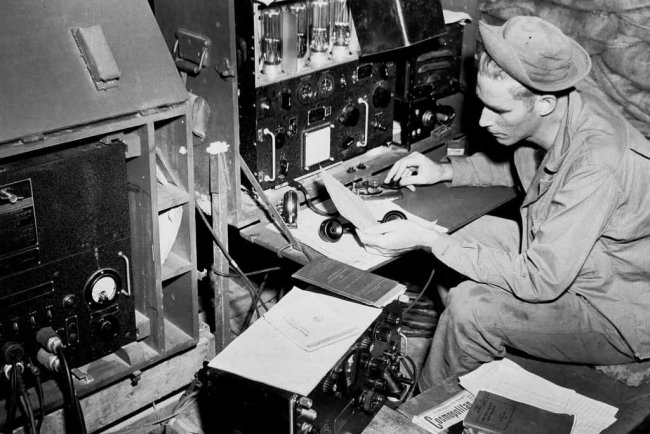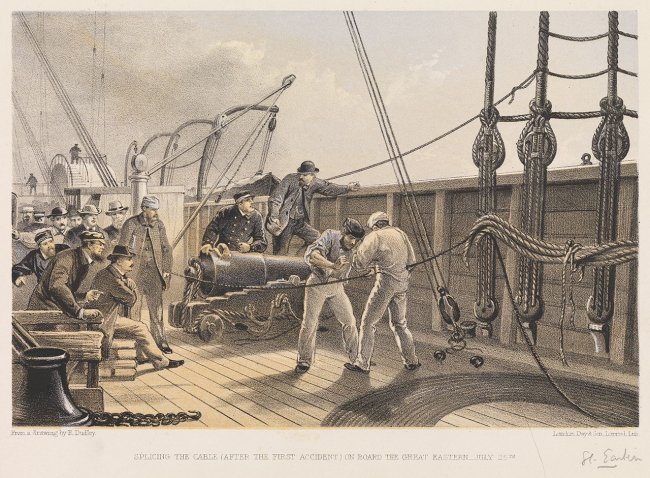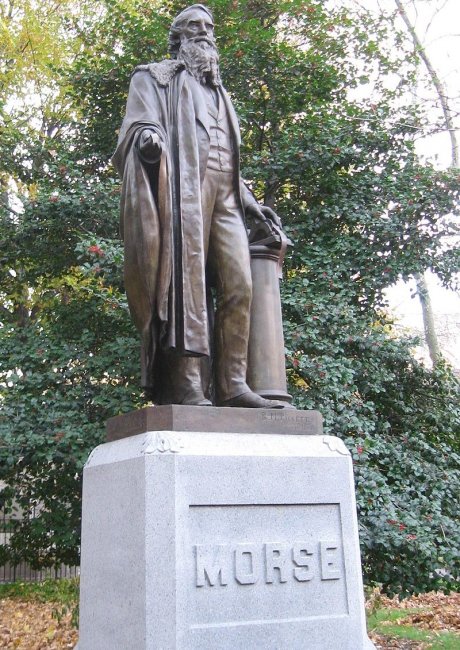The Story of the Invention of the Electric Telegraph by Samuel Morse
In October 1832, on board the packet boat Sully, which made regular flights between Havre and New York, there assembled quite a motley company of passengers, many of whom were keenly interested in all kinds of scientific and technical matters. Among them were two Americans: the little-known artist Samuel Morse and the physician Charles Jackson.
Morse returned to his homeland after a three-year internship in the genre of historical painting. As for Jackson, he briefly came to Paris to listen to a course of lectures by the then famous physicist Poulier on electromagnetism. Electromagnetic phenomena, which were still a novelty, so captured the imagination of the young doctor that he could not resist telling his casual companions about their wonderful properties.
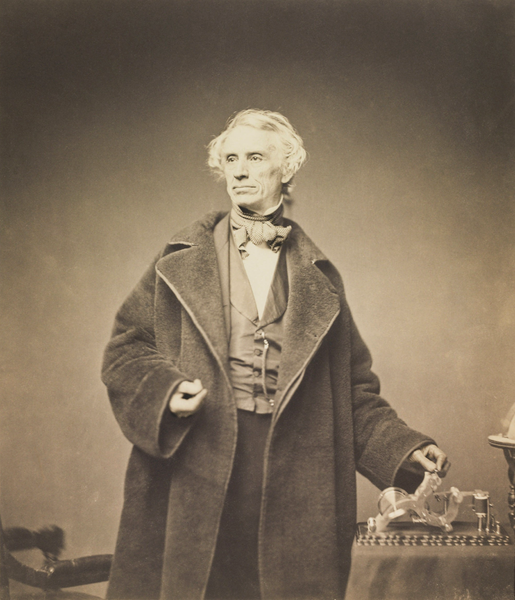
Samuel Morse (1791 — 1872). Photograph taken by Matthew Brady in 1857.
Morse paid particular attention to Jackson's stories. Influenced by what he had heard, he had the idea of an electromagnetic telegraph device capable of instantly transmitting signals over great distances.
Immediately after his arrival in New York, he began actively working on his idea and three years later showed the first model of the telegraph apparatus to the New York public.
Meanwhile, more frequent reports began to arrive about the successes achieved in the field of electric telegraphy by the Germans Wilhelm Weber, Carl Gauss and other European scientists.
Morse carefully studied this news and continued to work hard on his apparatus, despite the fact that he had already received recognition as an artist, became a professor of painting and even the first president of the National Academy of Painting in New York.
The first electric telegraph
On October 4, 1837, in the New York University building, Morse presented to the public a completely perfect electrotelegraph apparatus. However, the incoming transmissions were so difficult to decipher that only the inventor himself could read them.
This temporary failure did not stop Morse: less than five months passed since the apparatus was finalized, and most importantly, during this time Morse invented his famous alphabet, made up of combinations of dots and dashes, which is still widely used in practice .
After finally achieving the desired success, the inventor, however, spent another five years seeking the consent of the US Congress to finance the construction of the telegraph line.
It was not until the beginning of 1844, by a vote of 89 to 83, that the congressmen made a positive decision, and Morse immediately began work.
At first, the builders tried to lay a multi-core underground cable enclosed in a lead pipe. For this purpose, the engineer Ezra Cornell even designed the world's first cable-laying machine - a special plow that digs a trench, lays a cable in it and buries it.
However, the underground laying of the line proved to be unreliable. Then the wires started hanging on poles. Bottle necks served as insulators (and the witches claimed that only whiskey bottles were used).
Apparently, there was no shortage of insulators, the pace of construction increased, and by the end of May 1844, the first public telegraph line in the world, equipped with Morse devices, connected the capital of the United States, Washington, with the city of Baltimore, located sixty kilometers away. And soon telegraph wires covered the whole country with a dense network.
Morse telegraph scheme
morse code
The code system developed by Morse and his assistant Alfred Weil covered all the letters of the English alphabet and made it possible to easily transmit complex messages over telegraph lines.
The key to Morse code in constructing the code was to consider how often each letter is used in the English language. The most commonly used letters have shorter symbols. For example, the letter «E», which occurs most often in the English language, is denoted by a single «dot».
Morse code is designed in such a way that a person can understand it without a special decoder. In an emergency, this makes it a universal means of communication.
The first message sent with dots and dashes in Morse code over a long distance was sent from Washington to Baltimore on Friday, May 24, 1844.
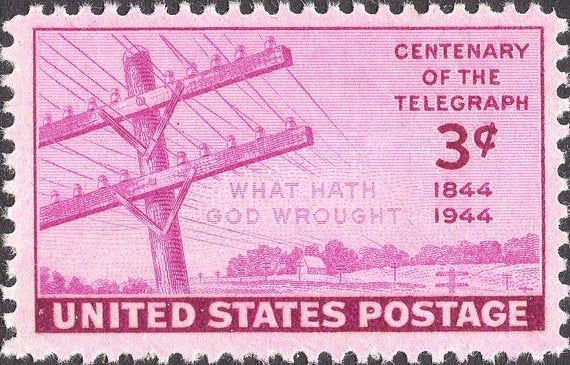
US First Day postage stamp and envelope, 1944, commemorating the 100th anniversary of the first message sent using Morse code
In 1848, electric telegraph communication was introduced between the German cities of Hamburg and Cuxhaven.Three years later, the first telegraph line in Russia was opened, connecting Moscow and St. Petersburg, and by the end of the century there was not a single significant European city from which an electric telegraph wire did not extend to the rest of the world.
Use of Morse code in the first half of the 20th century (by 1890 Morse code was already widely used in radio communications)
For a relatively short time they remained an insurmountable obstacle to the telegraph and water barriers. The first submarine cable, as you would expect, was laid across the English Channel on September 25, 1851. It connected Great Britain to France.
Over the next three years, Misty Albion was connected by submarine telegraph cables to Ireland, Belgium, Germany and the Netherlands.
In 1854 a connection was established between the Mediterranean islands of Sardinia and Corsica, and then the telegraph cable reached the Apennine Peninsula, connecting these islands to the mainland. The question of conquering the Atlantic Ocean was on the agenda.
Beginning in 1857, four attempts to lay a transatlantic telegraph cable ended in failure, and finally, in 1866, an expedition of the then famous leviathan, the giant steamer Great East, was crowned with success: in just two weeks, from July 13 to 27, the first telegraph line was laid between the west coast of Ireland and the Canadian island of Newfoundland.
Cable connection (after the first disaster) on board the Great Eastern on 25 July 1865. Color reproduction, National Maritime Museum, Greenwich, London
Not even in his wildest dreams did Samuel Morse dare hope for such a triumphant march for his child.The inventor was lucky enough to see in person the universal and undeniable recognition of his merits and even a monument erected in Central Park in New York.
Statue of Samuel Morse by Byron M. Pickett, Central Park, New York, 1871.
Another notable inventor, the Russian scientist Pavel Lvovich Schilling, was much less fortunate.
In the same October 1832, when Morse was thinking about the creation of a telegraph apparatus on Sully's packet boat, a similar device suitable for practical use had already been built by Schilling and demonstrated to the public in St. Petersburg. But, as often happens with other inventions, despite the great interest of the educated society in the new device, the government was in no hurry to introduce it.
It was only after Schilling successfully presented his apparatus at a congress of natural scientists and physicians in Bonn in September 1835 that the government formed a "Committee for the Examination of the Electromagnetic Telegraph", which commissioned Schilling to establish telegraphic communication between Peterhof and Kronstadt. But the scientist did not time to complete this work: in the summer of 1837 he died.
Oleg Novinsky

